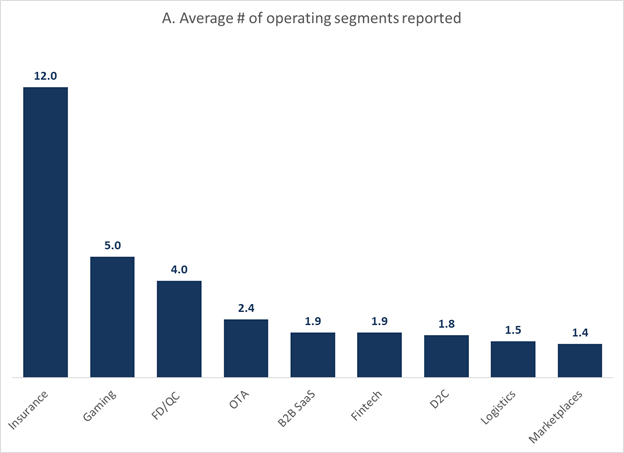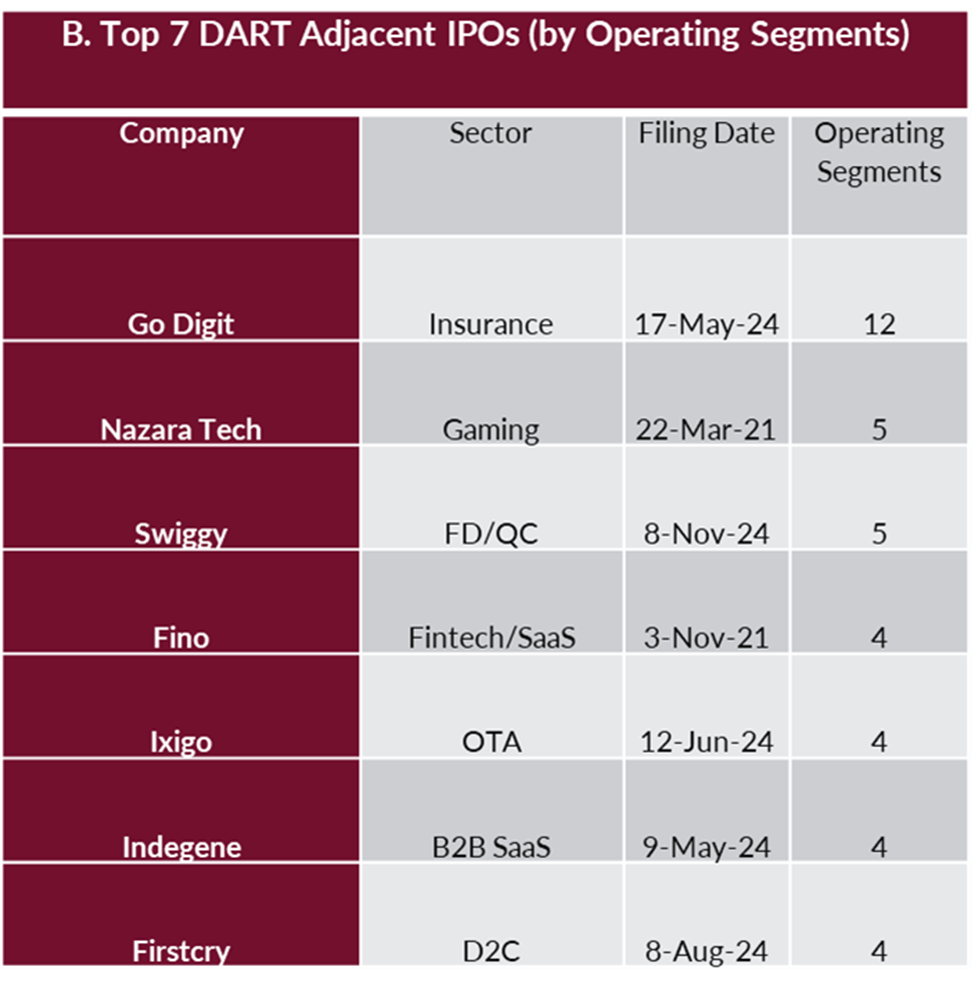Why Report Segments?
The disclosure of operating segments in IPO prospectuses is not a strategic choice - it is a regulatory necessity dictated by Ind AS 108 reporting guidelines. Companies with multiple lines of business, each carrying distinct risk/reward profiles and assignable costs, are required to classify and report them as separate segments.
This article examines two key aspects of segment reporting in IPOs:
- Which DART companies assess their business lines as having discrete risk-reward structures and cost allocations.
- What kind of operating risk exposure (single vs. multiple segments) IPOs present to investors.
Reviewing 20 Years of IPO Filings
To analyze these trends, exchange filings from 50 New Age Tech/Tech Enabled companies over the past two decades were examined. We looked at explicit reporting of operating and financial metrics for discrete business segments. Native classifications were then applied to understand the group-wide and individual trends shaping IPO disclosures.
Which Companies Report Multiple Operating Segments?
Key Observations from IPO Disclosures

Chart A: Insurance, Gaming, Food Delivery/Quick Comm are the sectors with highest # of reported operating segments
Source: SEBI Filings
- Insurance leads in complexity: Go Digit reports 12 segments, indicating that insurance companies tend to view individual insurance lines as separate risk units.
- Sector-specific reporting patterns: Companies in Food Delivery/Quick Commerce (FD/QC) and Online Travel Aggregators (OTA) tend to report multiple operating segments.
- Recent IPOs show a higher number of segments: Firms that went public recently (Ixigo, Swiggy) report more business segments than earlier IPOs in the same sub-sectors (Yatra, Zomato).
- D2C firms often report a single segment: Despite selling multiple product lines, many D2C firms classify themselves under a single operating segment - except for Firstcry, which differentiates risks associated with local/international operations and private label brands (unlike Nykaa).
- Growing trend in segment disclosures: Four of the top seven such IPOs - Swiggy, FirstCry, Ixigo, Indegene- by reported operating segments debuted within the last year, suggesting a shift in reporting strategies.

Chart B: Four of the Top 7 IPOs with the highest segment disclosures happened in 2024
Source: SEBI Filings
Why Are Companies Reporting More Segments?
The increasing segmentation in IPO filings might be explained by
- Companies looking to accelerate their IPO timelines by highlighting profitable business units, even if the overall company is not yet fully profitable. For companies like Swiggy, which have a mature core business - food delivery, with high cash burn emerging segments - quick commerce, might want to make that distinction.
- A move toward better disclosure of bundled risks—giving investors a clearer picture of business complexities. For segments such as NBFCs and insurers (GoDigit), multiple segment reporting might be required by regulation
- An attempt to frame themselves for SOTP valuation plays, enabling future corporate actions. This is still a hypothesis, but we have seen this emphasised in client conversations, especially where the motivation eventually is to convince the research analysts of the valuations sought in the market.
That said, over-segmentation can reduce the general fidelity of accounts themselves. Companies segments don’t just do business with external customers, they sell to each other as well. Also, there is a trade-off between segmental reporting and the apportioning of common costs between different divisions. Over-segmented annual reports, thus, to general investors, might become a source of confusion, rather than clarity.
As IPO markets evolve, segment reporting will continue to shape investment perceptions, valuation strategies, and risk disclosures. This remains an area of active analysis, and future trends will likely provide deeper insights into how business complexity translates into market positioning.
Stay tuned for more insights on this topic.
